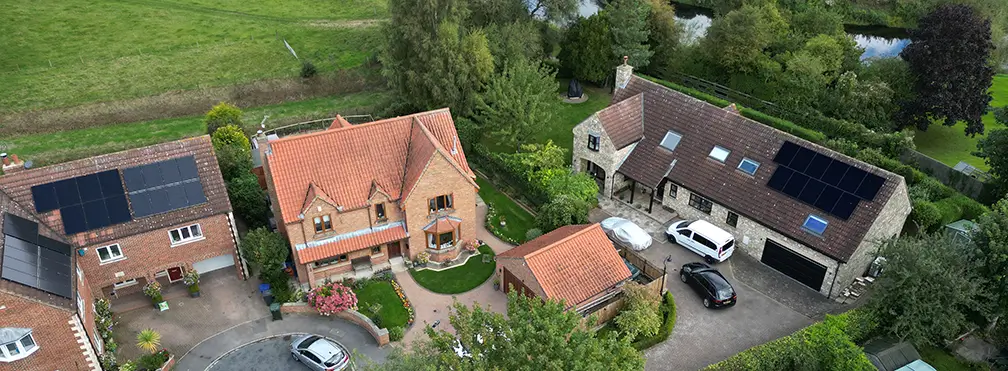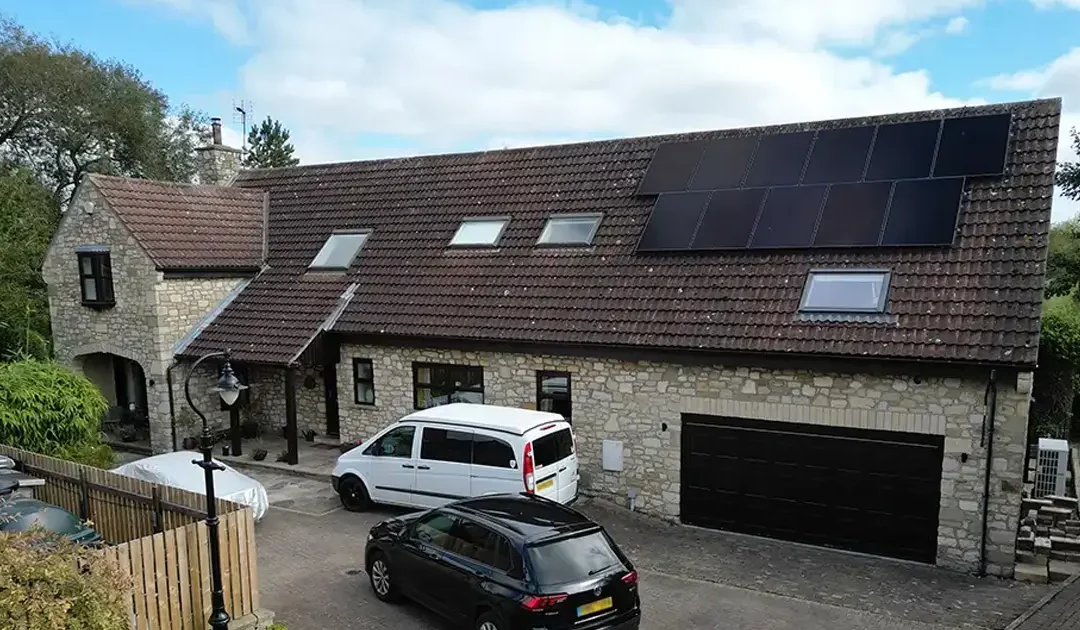We were lucky enough to install a system for Fraser, a time-served financial professional from the Tadcaster area. As a man used to dealing with financial forecasts, he really understands how to approximate returns based on data. Fraser didn’t accept the industry standard calculations for his return and we were happy to help him take a more real-world data driven approach by providing the output from systems we have installed for ourselves. Fraser was kind enough to write down his thoughts on his methodology and the financial viability of his system using his calculations. Here at ASK we are always happy to to help with any information you need to make your leap into solar. Here’s Fraser’s conclusions, we hope you find his case as interesting as we did.
Don’t leave your money in the bank… the returns are better in solar.
Every company offering Solar follows the same standard approach to calculating the financials of a proposed system. These are set out by the regulator and will calculate how many years it will take to pay back the total cost of the installed system alongside the total value that it will generate over 25 years. This is fine, but the projections are based on a lot of assumptions such as annual energy price inflation (normally continuing at today’s rate – 7% when I was looking) and importantly will only be based on the solar output. These calculations ignore any benefit of battery storage if you choose to add these as it’s very hard and subjective to calculate accurately depending on usage, battery size etc. As an accountant I couldn’t justify investing such a large amount of money based on so many unknowns and particularly not knowing the value that the investment in batteries would yield. The only thing certain with any forecast is that it will be wrong, especially one that looks so far into the future. I would need to look a little more near-term and remove some of the unknowns to get myself comfortable.

My energy consumption is high at 11,000 KwH per year as I have an air source heat pump. I broadly knew I should look at purchasing at least one battery to run my heat pump at night, but to justify investment in a second I needed to look further and from a different angle. I wanted to see how including batteries could impact the returns and also simply calculate a year 1 return on my investment rather than relying on fictitious long range forecasts based on inflation.
The system design indicated how much energy I could generate on an annual basis and I knew how much I actually used from my smart meter. However to monetise this I needed to look monthly and convert all this into a value based on an available tariff for feed in and feed out. Firstly, I took the monthly usage from my own smart meter for the past 12 months and updated with today’s prices with Octopus Flux. I then broke down my annual projection from the system design by month to plot against this and work out my monthly surplus or deficit. Tom from ASK Renewables helped me here by providing the past 12 months of generation from his own system. I used this to work out a share of his total generated for each month that I could then apply against my own. I could now see the monthly surplus or shortfall my proposed system would generate versus my actual smart meter readings. Using this, I then simply multiplied these by the prices in the tariff, making some allowance for the fact that when possible I could force discharge my batteries during the daily peak and fill them up at night to boost the average export and import price. Whilst not an exact science this gave me comfort in the approximate year 1 saving versus my pre-solar electricity cost. Furthermore and more importantly when I divided this total year 1 saving amount against the cost of the system, this equated to an 11% return – much more than I could ever get just leaving the money in a savings account and, with this being based on more actual data, I considered this to be a worthwhile investment.
In summary, it was easy for me to highlight flaws in the regulator provided forecast methodology for a number of reasons:
- The focus was on inflation continuing at today’s rate of 7% which would flatter the saving number.
- It calculated a break-even point but didn’t account for any benefit of costly batteries and therefore the more battery storage you add, the worse the returns became.
- Finally, it provided a huge returns number after 25 years taking into account the above two factors (or not when it comes to battery storage). This just seemed far too good to be true.
My calculation allowed me to arrive at a decision based on what I actually knew today. But finally, to cover off the payback period – simplistically, my annual return of 11% suggests a payback of around 9 years (100/11%). A quick Google search shows that energy inflation averaged 5.5% between 1989 and 2024 so accounting for this reduces the payback to just over 7 years – more sensible than the regulator provided forecast.
I have been up and running for just over a month now and I’m really happy with the results so far. Before buying my system I spoke to a number of companies, most of whom took a very sales-led approach, but I chose ASK Renewables as they did precisely the opposite and took time to indulge my need to base a decision on a more comprehensive picture of returns. Working out the return I could get versus simply leaving the money in my account was a much more powerful way of my justifying what was always going to be large investment as opposed to relying on payback periods and ‘potential’ returns 25 years into the future.

Always do your research
What this highlight to us is the importance of doing your research and satisfying yourself that you are making the right decision for you, your specific needs and the needs of your family. We believe in making sure that each case and each system is designed to give you the best return and piece of mind. We’re here to help and we’re happy to crunch numbers with you and for you.
Get in touch if you have any questions. We’ll always be on the end of the phone or quick to answer an e-mail or Facebook enquiry. We hope you found Fraser’s experience helpful. Have a sunny day!

